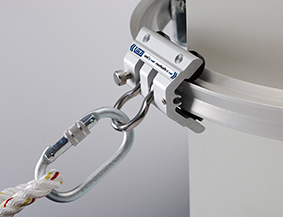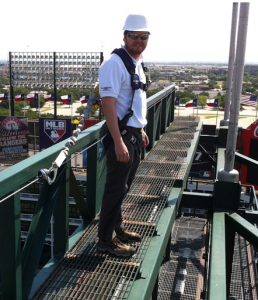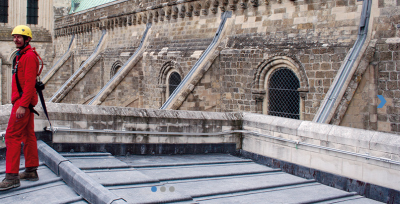The Aesthetics of Fall Protection
 The need for fall arrest systems to protect individuals working at heights in industrial settings may seem obvious, but a number of additional, “unlikely” facilities, including rooftops of historic and commercial buildings, as well as theaters, stadiums, and theme parks also present fall hazards. Unlike the fall protection systems typically installed for industrial applications, our previously mentioned “unlikely suspects” pose additional design challenges that go above and beyond keeping workers safe.
The need for fall arrest systems to protect individuals working at heights in industrial settings may seem obvious, but a number of additional, “unlikely” facilities, including rooftops of historic and commercial buildings, as well as theaters, stadiums, and theme parks also present fall hazards. Unlike the fall protection systems typically installed for industrial applications, our previously mentioned “unlikely suspects” pose additional design challenges that go above and beyond keeping workers safe.
For most industrial fall protection applications, design criteria for fall protection systems typically include ease of use, cost-effectiveness, and OSHA compliance. Assuming the safety engineer addresses these parameters, a variety of different fall arrest systems, including vertical and horizontal lifelines, safety railing systems, and single post anchors remain viable options. The moment we stray from a manufacturing facility, chemical processing plant, or defense installation, an additional consideration is added to the mix: aesthetics. With this in mind, how do we design and install a fall arrest system that is both functional and largely invisible to the casual observer?
The rooftops of historic structures and buildings rich with significant architectural details are case in point. From the architect’s perspective, the fall protection system protecting workers performing routine maintenance must blend with the existing roof site-lines. In these instances, safety railing systems are obviously removed from consideration, but even more inconspicuous solutions such as horizontal lifelines may spoil the site-lines of the building. These applications often lend themselves to low profile rigid track fall protection systems which are easily concealed and not visible from ground level. UniRail track consists of extruded aluminum that is easily bent during the fabrication process to accommodate corners, curves, and irregular contours presented by the building’s rooftop or facade.
 The fall hazards presented by stadiums, amusement parks, and theaters create a different set of challenges for the safety engineer. For these applications, the presence of fall protection systems can’t interfere with the visitor experience. Roller coaster rides have thousands of feet of track requiring daily inspection; every televised sporting event requires anchor systems to protect camera crew perched in precarious positions throughout the stadium.
The fall hazards presented by stadiums, amusement parks, and theaters create a different set of challenges for the safety engineer. For these applications, the presence of fall protection systems can’t interfere with the visitor experience. Roller coaster rides have thousands of feet of track requiring daily inspection; every televised sporting event requires anchor systems to protect camera crew perched in precarious positions throughout the stadium.
Theaters require catwalk systems to protect stage crew members tending to lighting and curtains, and we have even received the occasional request to create special harness systems to safeguard actors and actresses during performances. Each of these applications requires the design and installation of fall protection solutions that are either concealed or largely invisible to patrons and guests.
Each of these scenarios depicts the intersection of design considerations and fall protection requirements. With care and proper planning, a fall arrest system can do its job without ruining site lines or drawing crowd attention. Although the applications described in this post are atypical, each instance is a perfect example of why engineered fall protection systems are so important. If you have a challenging fall protection application that requires attention to both form and function, contact the safety specialists at Diversified Fall Protection for more information.
Schedule an assessment with Diversified Fall Protection
Contact Us to request a fall safety review

b-1.jpg?width=1368&height=1340&name=Rail%20(175)b-1.jpg)


